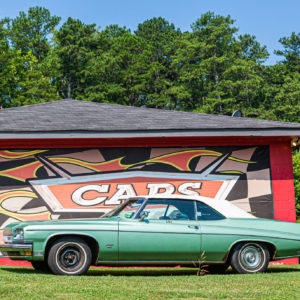 In the world of classic cars, the “survivor car” is a great anomaly. Put simply, a survivor car is a classic vehicle that hasn’t been altered in any way since it was built. Different people and different organizations have slightly different ways to define a survivor car. However, in the main, most agree that survivor cars must have the original paint job, original interior and parts, and have documentation attesting when and where the car was first purchased.
In the world of classic cars, the “survivor car” is a great anomaly. Put simply, a survivor car is a classic vehicle that hasn’t been altered in any way since it was built. Different people and different organizations have slightly different ways to define a survivor car. However, in the main, most agree that survivor cars must have the original paint job, original interior and parts, and have documentation attesting when and where the car was first purchased.
How Do Survivor Cars Even Exist?
Survivor cars are so strange because it’s nearly impossible to find a 50+ year-old-car that hasn’t had any repairs or improvements at all during its lifespan. Even the best-made vehicles experience natural wear and tear after a while, and conscientious car owners will usually replace car parts as they age or break down. (Consider that the average modern car only lasts eight years, and you’ll begin to realize why survivor cars are so rare.) As such, there are basically two ways for a survivor car to exist.
First, some survivor cars are merely forgotten about. These mythical “barn finds” have sat in storage for years without being driven. Though exceedingly rare, some survivor cars have sat virtually untouched for half a century or more. A few even have the original tires!
The other type of survivor car is more rugged. These are classic cars that have seen regular use, but have not been restored or refurbished in any way over the years. Usually, a classic car owner of one of these survivor cars makes the active choice not to restore the vehicle.
Lastly, classic car professionals may use the paint jobs on survivor cars to approximate restoration paint colors.
Are Survivor Cars Valuable?
Survivor cars certainly can be valuable in the right circumstances. Some collectors prize authenticity above all else, and so certain survivor cars can exceed the value of similar, restored classic vehicles. However, it’s worth remembering that survivor cars are very difficult to find. Even minor alterations made over the years could cause a car to lose its “survivor” status.
Types of Classic Car Restoration
Very few cars are true “survivors.” Rather, the vast majority of classic vehicles have had some sort of work done on them. In such a scenario, classic car owners can still recreate how these vehicles looked and ran through a restoration. If authenticity is the goal, classic car owners can elect to pursue a restoration that uses only original equipment manufacturer (OEM) parts that match their vehicle. Depending on the make, model, and year of the car, OEM restorations can be more difficult given the relative scarcity of available parts. (This can also drive up costs too.)
On the other hand, many classic car owners decide to restore their vehicle with aftermarket parts. Aftermarket parts allow for professionals to upgrade the car in key areas –– such as the engine, suspension, and interior. One of the key benefits of an aftermarket restoration is that it can significantly improve the “driveability” of the car. Cars built in the 1970s and earlier lack many of the modern amenities, like power steering and four-wheel drive, that drivers often take for granted.
To close, it’s worth pointing out collectors do not purchase survivor cars for regular use. They may not even be roadworthy –– especially if the tires have not been updated.
Learn More
At Precision Restorations, we love working with classic cars. We offer a number of different restoration services, and we’re happy to work with a variety of different makes and models. If you’re in the market for a classic car restoration, then contact us or call us toll-free at 1-844-652-1966. Or you can email me directly at [email protected]
